(Pictured above: The crew captures Miles [Timmy Hart Barron] and Annie [Callie Johnson] in a flashback, shot at Starved Rock State Park on anamorphic lenses. Photo by Brian Khan.)
Rear View
Lensing Grief
By John Klein
When writer-director Steve Kniss approached me about shooting his MFA thesis film, Rear View, it was probably one of the easiest decisions I’ve ever made saying yes to a project. Steve and I had already worked together on numerous films – he served as 1st AD on my film, Cry It Out, and on the film, Limerence, which I also produced – and I feel like we’ve been kindred spirits throughout our creative journey, having both been through the cinema program at DePaul University. So, I was crazy excited to work with him in a new capacity!
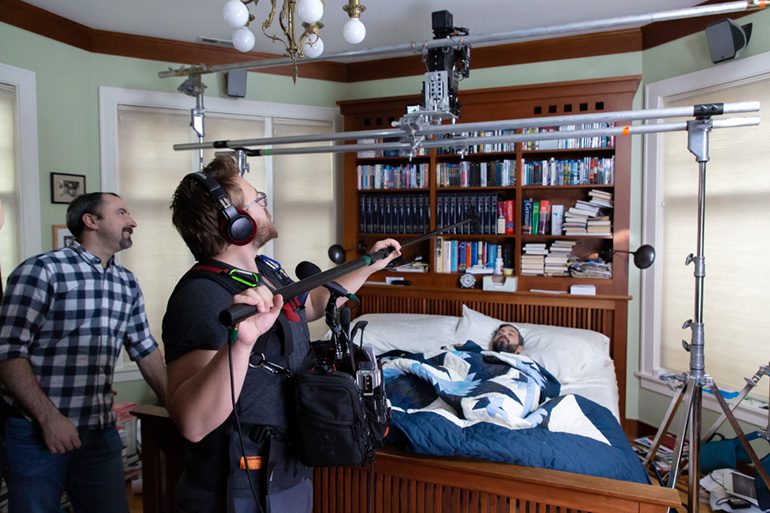
(Pictured above: The Amira is rigged above Miles [Timmy Hart Barron] to capture a nighttime scene, as DP John Klein and sound mixer Chris Nawrocki look on. Photo by Vashon Jordan.)
Rear View explores ideas of grief and parenting through the story of Miles (Timmy Hart Barron), a recently widowed man who finds himself unable to talk to his daughter Madison (Bela Nikolic) about his own grief or about how to process hers. Despite the heavy subject matter – made even more so by the times we’re in now, as it’s not mentioned how specifically Miles’s wife Annie (Callie Johnson) died but signs point to a long ailment – the script is full of warmth and even humor, jumping back and forth between the first dates of Miles and Annie at a hiking trail and the present day trip Miles takes Madison on to reminisce about those days.
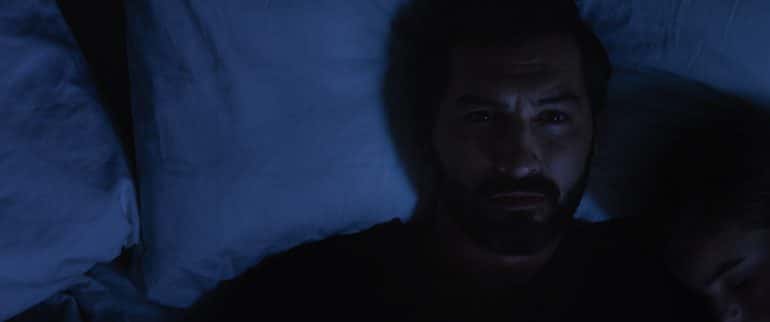
(Scenes from “Rear View”: The warmer shots are all anamorphic, and the cooler shots are spherical lenses.)
Our first brainstorming session was a very stream-of-consciousness meeting, as we referenced different films that came to mind and thought of ways to distinguish the visual style of the flashbacks versus the present. The discussion really centered around how to make the cinematography emotionally resonate with Miles’s journey: using widescreen compositions to accent the negative space in the frame (to “leave a space for Annie,” as Steve would say), and giving the flashbacks a vibrant, warm tone and a handheld energy versus the cool, static harshness of the present.
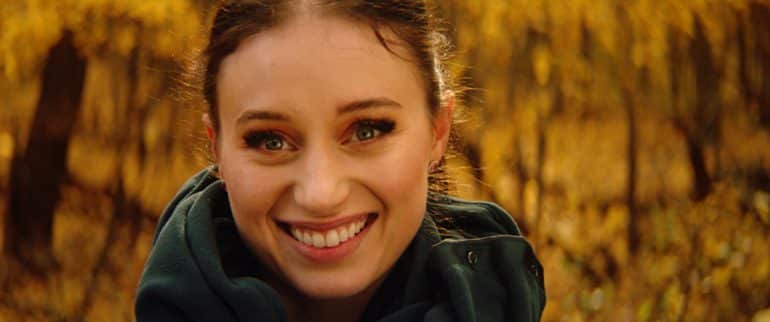
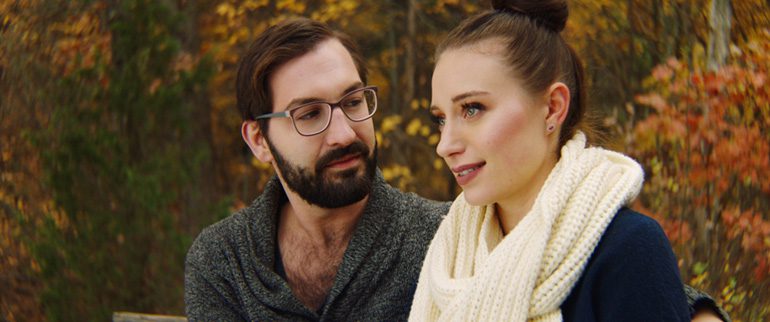
We also knew this would be a location-based shoot; our initial brainstorming had us talking about hopping in an RV with a small crew and driving to Virginia! Cooler (and less expensive) heads prevailed, and we wound up filming around our hometown of Chicago and out at Starved Rock State Park in Illinois for the bulk of the shoot. Since the crew stayed at a cabin about a mile away from location on our Starved Rock days, it wound up being a wonderfully communal experience that also enabled us to prep for the next day each night after wrap.
Because we were on location, we opted to shoot on the ARRI Amira, and decided to further differentiate the two timelines with SLR Magic anamorphic lenses for the flashbacks and Schneider Xenon spherical lenses for the present. Anamorphic lenses gave a dreamlike quality to the memories Miles had of Annie, and their overall lightness gave us a lean and mean camera package (props to 1st AC Karson Kent for stripping it down to essentials) that still had a unique visual flair, yet could easily transition from static to handheld and back. Not to say our bodies still didn’t hate us after hiking up hills and flights of stairs with all our gear!
One day of filming involving car mounts was particularly fun for us, as we were able to secure a long stretch of road at a forest preserve and safely execute the driving scenes with Timmy and Bela in the car. We also kept the camera packages even lighter for that go-round, opting for the same lenses on a Canon C300 Mark II setup and a Panasonic GH5 with Zeiss Distagons for odd angles like rear view mirrors, an obvious motif of ours. And we employed entirely wireless audio and monitoring so we could follow or lead from another car and stay out of the way of the actors.
Beyond all the geeky technical elements, a big consideration throughout the production was in how to manage filming with a child actor; Madison is 7 in the script, and Bela was 8 at the time of filming, so we wanted to make the set a comforting, welcoming, and fun place for her while also paying mind to the seriousness of the story and giving ourselves flexibility in the edit. Luckily, she’s an incredible talent, and her rapport with Timmy, Callie, and Steve paid dividends every day on set.
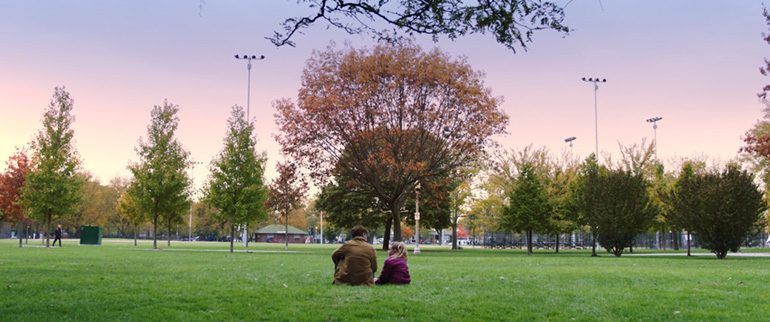
And after all that, Rear View wound up being one of the most visually serendipitous shoots I’ve ever had. The colors of fall were in full bloom the exact November weekend we filmed; our production designer Kaitlin Creadon likes to joke that she planted those trees decades prior to our shoot just in case. When we needed sun, it seemed to peek through the trees like magic. When we needed sad clouds and leaves to fall, the wind politely obliged, to the point where we’d plan to roll at the moment we felt the breeze, knowing in about ten seconds it would rain beautiful autumn leaves. And only after we wrapped and after we had made it to the shelter of our cars for the journey home did it begin to gently rain. It all seemed a fitting way to close out making a film about love, grief, and the way life goes on after.
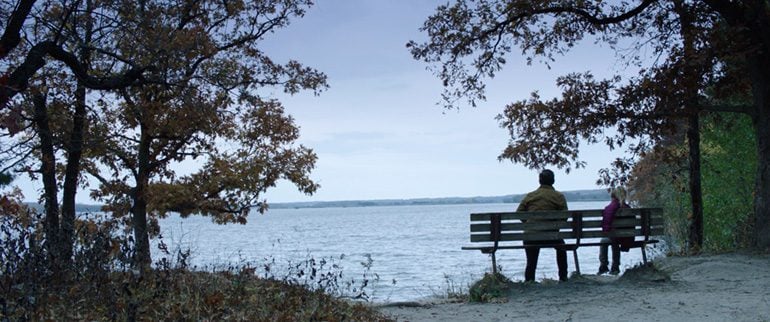
Rear View is currently touring the festival circuit; it can be seen remotely at several festivals in the coming months, including Chicago Onscreen, the River Bend Film Festival, and the Dayton Independent Film Festival. You can watch the film via writer-director Steve Kniss’s Vimeo page at https://vimeo.com/stevekniss.
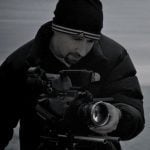 John Klein (www.windycitycamera.com) is a cinematographer, director, and writer who teaches film in Chicago and produces under the banner of his production company Glass City Films.
John Klein (www.windycitycamera.com) is a cinematographer, director, and writer who teaches film in Chicago and produces under the banner of his production company Glass City Films.






